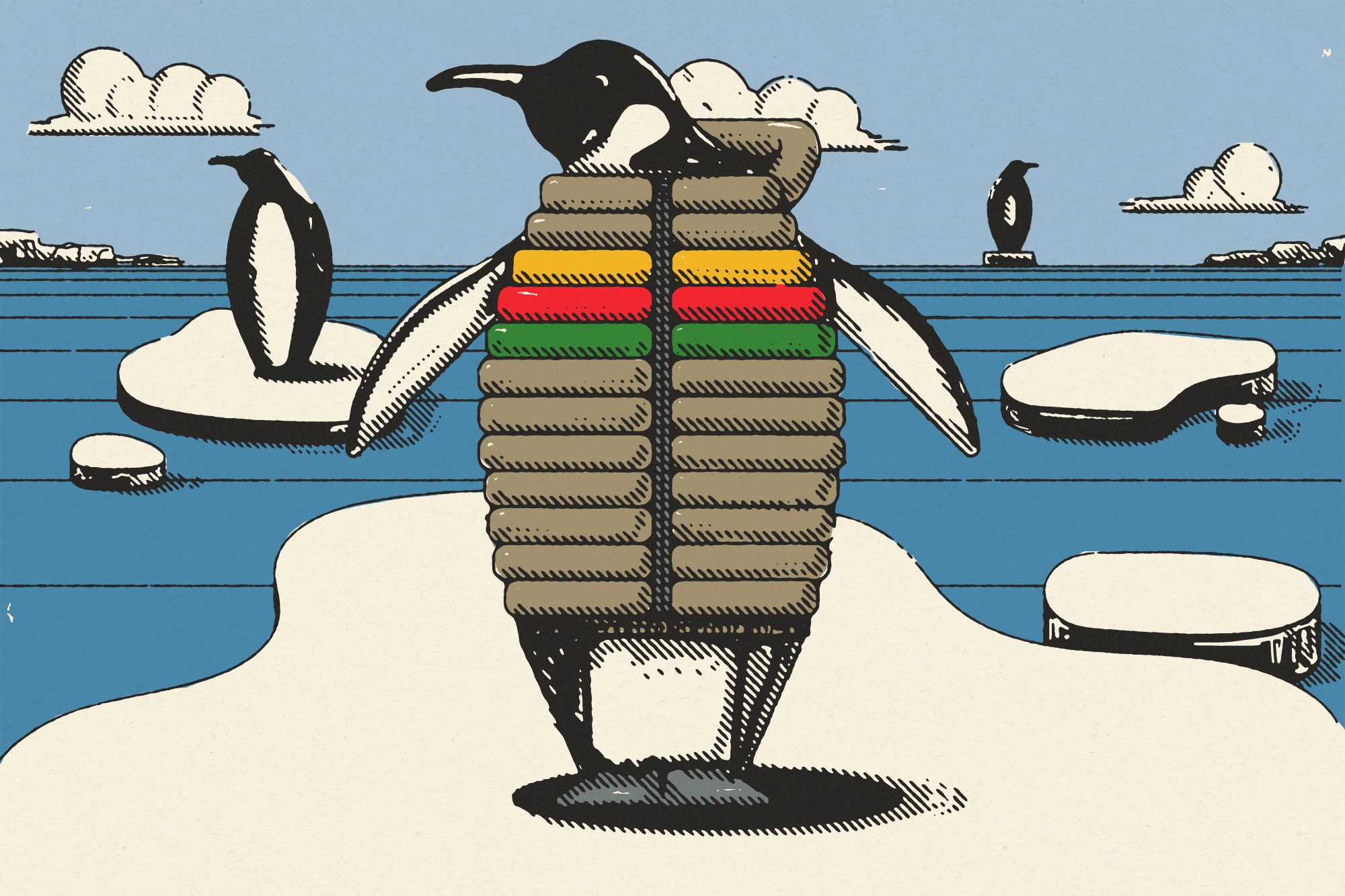Emperor Penguins Always Wear Warm Coats
They need ‘em in order to weather the coldest desert on Earth.

How do animals survive in harsh environments? This week, we’re celebrating some extreme desert-dwellers. Previously: the worm lizard that beats the heat by never coming to the surface, and the beetles that capture the fog in the Namib.
Picture a desert, and your brain probably leaps to sun-splattered sand. In those landscapes, plants and animals face intense heat and limited water, and often go to great lengths or depths to suss out food and avoid the sun. But not all deserts are sweltering or parched: Some are frozen.
For instance, NASA characterizes Antarctica—home to the coldest place on the planet—as a desert. The continent fits the bill because it sees so little precipitation (just a few inches a year), and because much of the water is locked up in ice sheets. To hack it there, animals don’t need to cool down, but warm up. And no one knows this better than the emperor penguin.
In Antarctica, these birds reign supreme. The heftiest of the penguin species, emperors have no trouble weathering the fiercest conditions Earth can throw at them. Average temperatures regularly dip down to -76 degrees Fahrenheit, according to the Australian Antarctic Division, and can crawl even lower. When wind whips across the landscape, it sometimes lifts snow from the ground and flings it into a blinding blizzard. The birds have nowhere to hide, so they just get on with it. They breed in winds that howl nearly 125 miles per hour, the British Antarctic Survey notes, so that offspring will emerge into slightly less hostile conditions.
How do they hang in there? They huddle together a communal cuddle, for one thing. Many ornithologists also like to point out that birds that are accustomed to cold weather are basically wrapped up in warm, puffy coats. Plumage and fat make for good insulation. That’s certainly the case for the penguins, but until fairly recently, there were some misconceptions about exactly what emperor penguins’ coats had going for them.
For a while, many scientists figured that the emperors’ feathers must be really densely packed. Back in 2015, a team of researchers led by the comparative physiologist Cassondra L. Williams, who was then at University of California, Irvine, took a closer look, and found that wasn’t the case.
By examining a small handful of penguins found dead on the ice, Williams and her team learned that the birds had no more than nine feathers per square centimeter—nowhere close to the maximum seen in bird species.* They also discovered that the penguins had various types of feathers that they hadn’t expected to find. In addition to the stiff outer feathers, known as contour feathers, and the little gossamer-like after-feathers that tuft off them, the team also found ones called downy plumules and filoplumes.
While most other researchers hadn’t described plumules at all, Williams and her collaborators found that they were plentiful, and likely “the main source of insulation, as these feathers form a dense mat beneath the contour feathers and are four times as numerous as other body feathers,” the researchers wrote in the Proceedings of the Royal Society B. Filoplumes, which are spindly with barbed tips, are most commonly seen in flying birds, the Los Angeles Times reported, and are thought to help birds sense when their feathers are ruffled so that they can smooth them back into a slick shape. There’s still more to learn about exactly how the filoplumes are serving the penguins, and how the feathers are working in tandem to keep the birds warm. For now, though, it’s clear that these emperors’ clothes are working hard.
*Correction: This article originally stated that emperor penguins have no more than nine feathers per square meter. It is actually nine feathers per square centimeter.

















Follow us on Twitter to get the latest on the world's hidden wonders.
Like us on Facebook to get the latest on the world's hidden wonders.
Follow us on Twitter Like us on Facebook